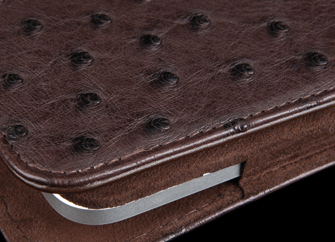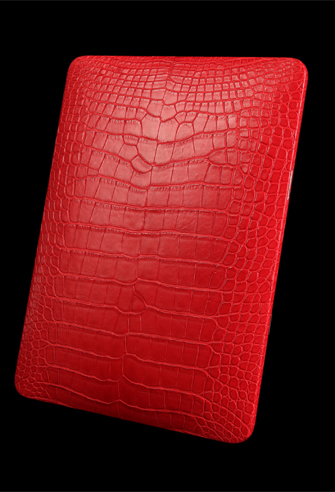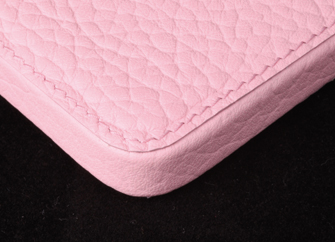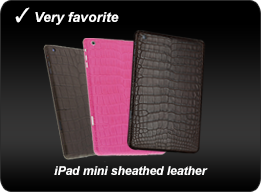 |
||||||
|
|
||||||
|
|
||||||
 |
OSTRICH:The ostrich skins used for the fabrication of products, leather goods and casings come uniquely from South African farms. These products are tanned on site. Ostriches are a special case as they are a good example of the use of leather as well as the participation in sustainable development. They are born on site, raised on farms dedicated to ostrich farming. The uniqueness of ostrich skin lies in the “pearls” made by the feather roots. |
The relatively high price is due to the fact that only the parts of the skin that have “pearls” are used for the fabrication of leather products. The scientific name of the ostrich is Struthio Camelus. Ostrich skin must be accompanied by a manufacturer’s certificate confirming that the animal was raised on a farm. |
||||
|
|
||||||
|
CROCODILE AND ALLIGATORThis is by far the most natural and luxurious leather used in leather products and is the exotic leather par excellence. The skins used to produce leather articles come from breeding farms. As a result of this, poaching is curbed and very high quality skins are obtained. The principle of highly controlled farming is to participate in the preservation of existing wild fauna while avoiding overpopulation... Alligator leather is precious, the animal is especially raised for the use of its skin in leather products (handbags, and watch bands). Skins can be used according to the two cuts: the “Back Cut” and the “Front Cut”. Tanning is done in a “revolving drum” (a type of big washing machine) and finishing is usually done with an agate smoother that brings out the sheen of the leather. This also gives a subtle double tone. The part that is most used in luxury products is the belly which has square or rectangular scales. |
There are several species of crocodiles: • The Alligator, which is raised on farms located in Louisiana and Florida, is the most sought after in the luxury world. The scientific name is alligator Mississippiensis. • The Niloticus found in Africa and on the West coast of Madagascar. The scientific name is Niloticus Laurenti. • The Caiman whose scales are very bony is found in Central and South America. The scientific name is Caiman Latirostris or Caiman Crocodylus. • The Porosus, also called saltwater Crocodile is sought for its large-sized skin. The scientific name is Crocodylus Porosus. Crocodile skin is subjected to CITES (Convention on International Trade in Endangered Species of Wild Fauna and Flora), a convention that guarantees the origin and traceability of skins. Permis/Certificat d'Importation |
 |
||||
| |
||||||
 |
PYTHONPython skin, an exceptional and multifaceted material, is currently enjoying unprecedented fame in the fashion world of clothing and accessories. The python is one of the rare animals not raised on farms because it exists in abundance in India and South-East Asia. Beneath the apparent fragility of this skin (related to its scales that lift up) hides very strong “leatherwork”. Python skin can be worked and is therefore adaptable to several types of products such as watch bands as well as casings for pens, lighters, and telephones for example, and even small leather goods. The attraction of this skin is related to the need of each individual to personalise: every skin is different because the roots of the scales are never the same. Therefore, on the non-bleached versions, the random design that is typical of pythons, with all the diversity of the pattern, is visible. Each finished product is unique. |
Python skin can be used in different ways: • Matt uneven or smoothed skins: with the help of our tanner we have developed a process whereby very smooth skins are obtained with the scales stuck in place so that they do not lift up, for good long-lasting hold and so that the skin is smooth to the touch. In order to do this, skins with only small scales, with a natural finish and an original python pattern in “Front Cut” (the dorsal part of the animal) are used. • Skins with big ventral scales (often non-plated and with a more matt finish): The “Back Cut” of the animal (the ventral part which has broad reptilian scales) is used. Tests on pythons are in conformance (but this depends primarily on the type of finishing carried out: the more natural it remains, the less in conformance the tests will be). The scientific name of the Python is Python Reticulatus. Python skin is subjected to CITES, a convention that guarantees the origin and traceability of skins. |
||||
| |
||||||
IGUANA LIZARDAnother animal that is hunted is the lizard which, according to the family, comes from different countries. Iguanas live mainly in Central and South America. The “Teju”, found in South-East Asia, the Pacific and Australia is recognized by its square scales, unlike other lizards whose scales are more rounded. There is also a species called “Java” whose origin is the island of the same name. The skins used for our products are mainly Iguana skins or "JAVA" because of their large sizes, and they are all tanned in France. Tanning is done in a revolving drum with different finishes, either manually or automatically. Iguana skin is relatively easy to manipulate and the regularity of the scales makes it possible to harmonise products. |
Protective measures vary a lot according to the species: some are simply intended for monitoring populations; others are classified in appendix B of the Berne convention (appendix II of the Washington convention) and simply require a CITES number. |
 |
||||
| |
||||||
 |
SHRUNK, BUFFALO AND KIPThey are first sorted by skin quality then webbed-out (thinned) again in different thicknesses according to their uses (shoes, furniture or leather products). |
They are then put in big revolving drums for several cycles according to the desired finish, softness, texture, colour and feel. This leather has a naturally wrinkled texture. It is then impregnated and covered with protective lacquer which gives it excellent resistance to wear and ageing tests. This leather does not require any certificate. |
||||










